Selling has always been and will be about relationships. Social selling is the process of cultivating relationships with prospective customers using social media strategy. It can generate leads, cultivate relationships, increase trust, and boost your brand long before customers connect with you.
In this blog post, we take you through the most important social selling concepts you need to leverage this strategy for your business.
Table of contents
- What is social selling?
- How is social selling different from traditional selling practices?
- Why do you need to invest in social selling?
- The top social media platforms to practice social selling
- Best tips to master social selling
- Optimize your profile
- Identify your prospects
- Track results with analytics
- Build a strong relationship
- Share social proof
- Monitor competition to find opportunities
- Invest in social listening
- Be consistent
- Engage in online communities
- Use social selling tools
- Take the sales conversation offline to move ahead
- Social selling examples
- Frequently asked questions about social selling
- Grow on social media with Birdeye Social
What is social selling?
When businesses use social media to communicate with their prospective customers and sell directly to them, the sale becomes a product of social selling. While all businesses engage in social media marketing to improve their sales revenue, social selling is a strategy that primarily focuses on building relationships with social media followers and then turning them into customers.
It is a long-term strategy.
Instead of telling a customer what is in your product on day one and asking them to buy, you begin by discussing the bigger picture. When customers engage with the content, you position your brand as the problem-solver, someone who is on the side of the customer. You win their trust, and then you talk about the product.
This way, the relationship between a customer and a brand in social selling is much stronger than that in other selling practices.

How is social selling different from traditional selling practices?
Traditional selling usually involves cold calling or placing advertisements. It can come across as assertive and intrusive since most people don’t welcome sales-forward interruptions in their life. With cold calling, sales reps must get past gatekeepers to gain access to decision-makers, especially in the B2B market. Additionally, traditional selling relies on static in-house data, a percentage of which is likely outdated.
Social selling, on the other hand, is an ongoing conversation with real people and often decision-makers. Engaging within industry-specific networks via social media channels helps you connect with people receptive to your message. Conversations become organic, and the insights you obtain are dynamic and timely, helping you become a better seller.
Social selling is usually most effective when promoting your brand, company sustainability, and employee advocacy.
Why do you need to invest in social selling?
Without the social selling approach, social media users may interact with your content without knowing how to take the relationship ahead. Even if you secure engagement, you may not be able to drive sales from your social media platforms.
On the other hand, LinkedIn says social selling leaders are 51% more likely to reach their sales targets. Why does that happen?
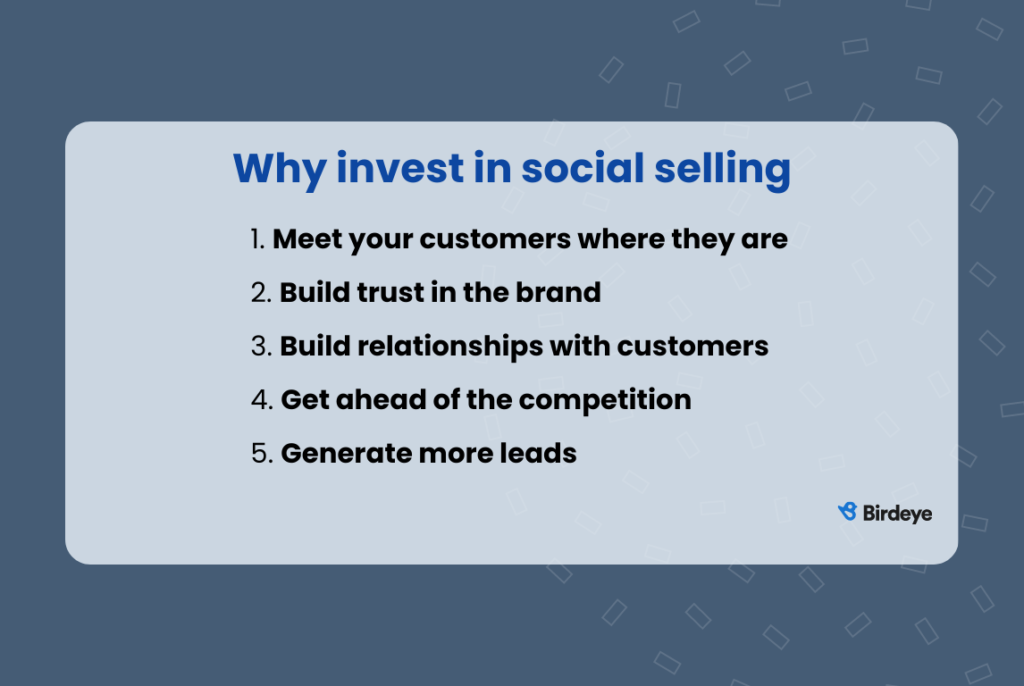
With social selling, you can:
Meet your customers where they are
2022 saw 4.6 billion social media users worldwide. With all those people on social media, it’s no wonder about 97 million made purchases directly from the social media feed. Despite this growth, companies in the U.S. can do much more to attract these social buyers.
With social selling, you can promote your brand’s values, messages, products, services, and campaigns on a channel that customers are most active on. The rise of influencer marketing and affiliate marketing on social media shows that customers are looking to make purchase decisions here, so this is the best place to sell.
Build trust in the brand
Social selling can increase your customers’ trust in your brand. A consistent presence on social media with regular posts, responses to customer queries/complaints, and engagements with brand mentions shows that your business cares.
A solid social media presence also promotes transparency, which most consumers look for in businesses today. By building a strong brand on social media, you can practice social selling to improve the conversion rates of your campaigns with the goodwill your brand has built.
Build relationships with customers
Positive relationships with your customers have a huge impact on your company’s growth. Selling is always easier when you can build an emotional connection between the brand and the customers.
Social selling helps cultivate organic relationships with customers. Instead of directly selling and cultivating a transactional relationship, you now invest time and build an emotional one.
With this approach, brands grow to become a source of information, inspiration, and knowledge by employing social selling strategies.
Get ahead of the competition
Almost everybody has a social media marketing plan. But only some companies are leveraging the practice of social selling effectively.
Users are looking at social media platforms to research brands and get other opinions on products. Use social listening to tune into the conversations people are having around your product, competitors, and the market in general. Then, contribute meaningfully to those conversations to make them notice you.
This way, you can tap into opportunities that your competitor is likely missing out on.
Generate more leads
Social selling helps you extend your reach beyond your sales floor. With it, you can reach members of your target audience who wouldn’t otherwise encounter your brand. You can grow your social media influence by using hashtags, sponsoring contests, participating in groups, and trending topics.
The top social media platforms to practice social selling
We now know that selling on social media can do wonders for your brand. But not every social media platform is ideal to do this. Take a look at some of the top social media platforms that help you leverage social selling to the maximum:
Over 80% of B2B leads come from LinkedIn. Also, almost half of B2B blog and website visits come from LinkedIn. This clearly shows that this is the platform to connect with prospects, especially if you work in B2B.
With LinkedIn, you can share content for your company’s followers, build a personal brand via thought leadership for your leaders, boost the profile of your sales team and help them connect to a broader audience with industry-specific groups.
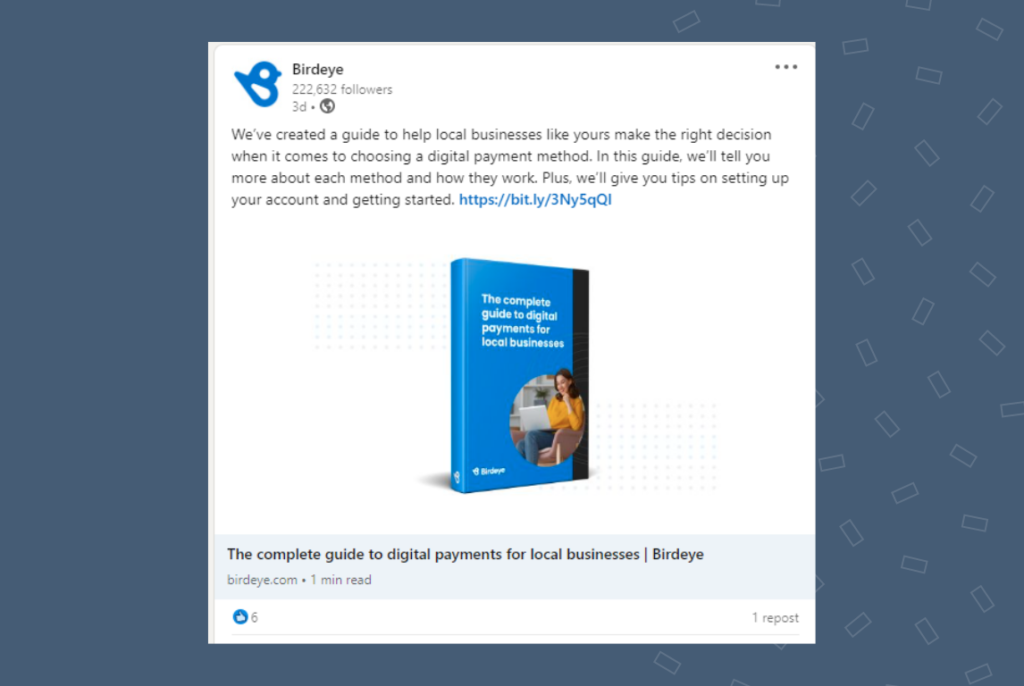
Educational content like you see above can bring your audience one step closer to you and help them appreciate your impact on their business.
Social selling index
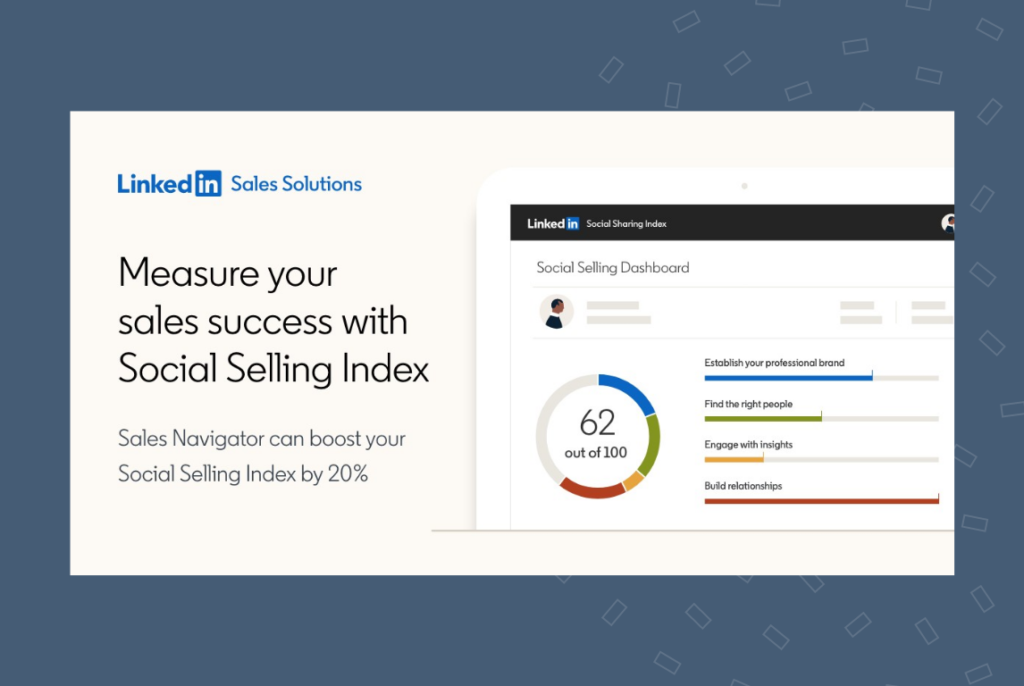
You can use LinkedIn’s Social Selling Index to measure your effectiveness on this platform. LinkedIn’s SSI measures four areas of social selling – establishing your personal brand, finding the right people, engaging with insights, and building relationships.
Each of these four areas contributes to 25% of your social index score. The higher the index, the more you outshine your competitors. For best results,
- Establish your personal Brand: There are several ways to do this on LinkedIn. Completing your profile, using a professional photo, posting unique content, and garnering recommendations are a few examples.
- Find the Right People: Your followers and connections are essential to your overall social selling index. Increasing the number of your followers is vital to expand your brand’s reach. Aim to attract relevant users with contests, giveaways, and informational content.
- Engage with Insights: Engaging your network with insights, posts, and articles will increase your social selling index. Engage with your network’s activity. Share relevant posts. Create original, thought-provoking articles.
- Build Relationships: Increase your social selling index score by building relationships within your network. Reach out to people through comments, sharing their posts, tagging them on your own posts, and sending them Inmails.
Twitter is a powerful social selling platform as its users come from all walks of life. About 40% of Twitter users are 25 to 34 years old. Most of its audience demographic is evenly spread across age groups and education levels.
Use Twitter when you want to connect with an audience that is diverse in almost every way and open to purchase recommendations. Nearly 9 of 10 Twitter users search the platform for new products. Three-quarters of Twitter users agree that their activity on the platform led them to purchase.
Facebook continues to be the largest social media platform, with three billion users.The platform is used by 69% of U.S. adults and helps target a wide demographic. 24% of Facebook users are 25 to 34, telling us just about every age group is represented on Facebook.
Facebook values personal connections, so it is an ideal place for the sales team to build their personal brand to generate leads. The sales team can engage with prospective customers and build relationships in these groups.
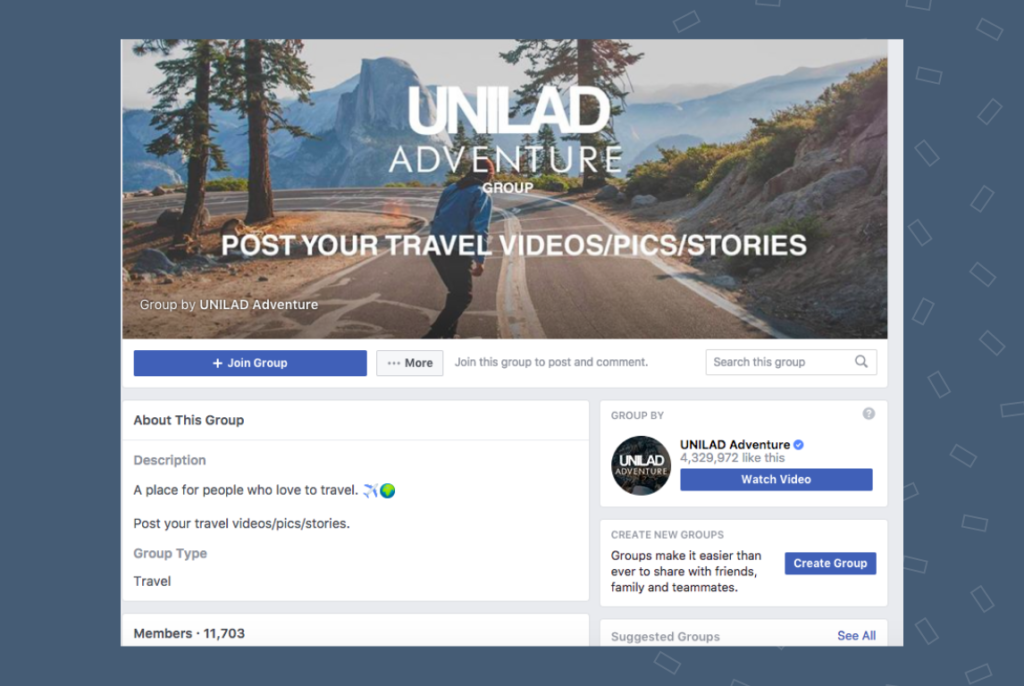
Facebook groups can be also a vital tool to leverage social selling on the platform. The platform’s algorithm emphasizes placing groups within users’ news feeds, and it can immensely boost engagement rates and brand awareness.
Instagram boasts 2 billion users and is the fourth most popular social media platform. Most Instagram users are 18 to 34 years old, while almost 16% of users are 35 to 44 years old. Most importantly, Instagram users respond positively to ads, making it an ideal platform to engage in social selling.
TikTok
Like Instagram, over 60% of TikTok users are 18 to 34. Nearly a third of TikTok users say they purchased a product they’ve seen on the platform.
TikTok ads are more effective than other media ads, with users able to recall up to 40% more of the ads they viewed on TikTok versus television, streaming, and radio. Those ads are effective, too. The average engagement rate on TikTok is 4.25%, higher than other social media platforms.

TikTok requires more effort since it features short videos. But if your target audience is young, TikTok is well worth it. You can show off your brand’s creativity with your own TikTok videos. Feature people using your product, show off your operations or create a TikTok challenge.
You can also partner with one of the more than 200,000 influencers on TikTok. Regardless of how you post content on TikTok, engage users through comments for best results.
Best tips to master social selling
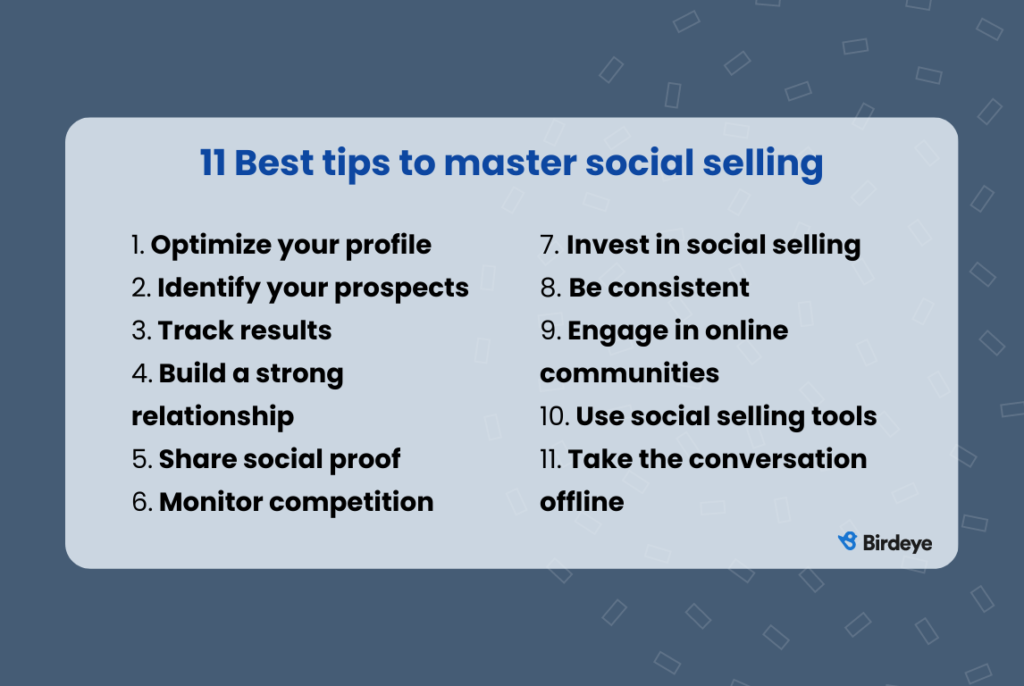
Optimize your profile
Regardless of the platform, your profile is where users come to know you. Make sure your profile is completely updated across each social media platform. As with anything else in marketing, consistency is vital for brand awareness.
So how can your profile elevate your impact on social media?
- List your website on each social media profile’s bio.
- Don’t make users click through to your website for basic information. List your phone number and hours of operation on your profile page.
- Make your profile distinctive. If users search for your company on the social media platform, make sure your profile is easily recognizable in the search results by including your brand logo.
- Add links to essential product information, the latest launches, FAQ sections, and more for easy accessibility.
Identify your prospects
Familiarize yourself with the key demographics for each social media platform. Choose the top two or three platforms that match your target audience. Social selling is about building organic relationships, even when generating B2B sales. Reshares, comments, and other interactions will go further in building relationships.
To identify your potential customers across each platform:
- Leverage social listening tools to monitor conversations around your industry, product, and competitors.
- Run surveys with leads, customers, and employees to know their preferred social media channels.
- Analyze existing customer base to see who responds well to selling on social media platforms.
Track results with analytics
To know if your efforts have any impact, track key performance indicators. Some useful metrics to track include engagement metrics, conversion rates, leads generated, and so on.
Also, use social listening to track how often your brand is mentioned across social media.
For best results:
- Use your analytics results to produce content your audience is more likely to engage with over time.
- Use customer surveys to understand how your social media presence influences conversions.
Build a strong relationship
Social selling’s strength lies in its ability to help you build strong relationships with your target audience. Users log onto social media specifically to engage in conversations. That means they’re far more receptive to your messaging than if you had interrupted them with a cold call.
With a few strategies, you can make the most of the relationship-building opportunities of social selling.
- Start by monitoring brand mentions across channels. Respond appropriately to these mentions. Forward complaints and concerns to the proper department.
- Join industry-related groups and proactively reach out to these users. Share relevant information within these groups.
- People often seek out social media brands to ask them questions or provide feedback. Responding to these comments and questions will nurture your relationship with these users.
- Finally, B2C and B2B social selling is about showing the human face behind your company’s logo. So don’t hesitate to infuse personality into your profile, posts, and responses.
Share social proof
Social proof is a powerful motivator for purchasing. Most consumers go online and to social media to research brands before they buy.
Your company’s social media presence is a great way to feature people who are happy with your products. Great customer experiences are contagious and attract new customers.
To do this:
- Repost customer testimonials.
- Encourage customers to post about your brand on social media.
- Share reviews from other platforms on social media.
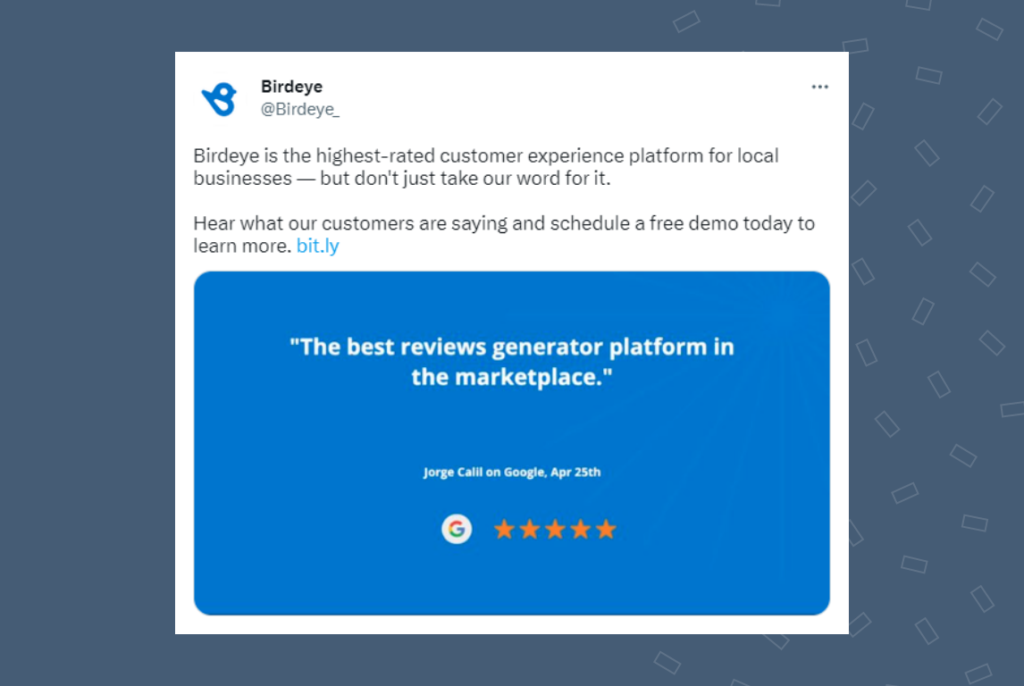
Monitor competition to find opportunities
You can also create a more effective social selling strategy by monitoring your competitors on social networks. Understand what’s working for them, and know when and why they start trending. Don’t make the mistake of trying to copy your competitors, though. Instead, look for ways to differentiate yourself.
Invest in social listening
Social listening involves monitoring social media for conversations, mentions, and trends important to your brand. The activity you monitor and analyze could be related to your industry, competition, or company.
You can then use the insights you glean to create a social selling strategy that will resonate with users and establish your brand as a thought leader.
Be consistent
Social sharing requires commitment and consistency. Don’t spread your marketing efforts thin across social media platforms. Like a defunct blog or incomplete website, a social media profile with little to no activity will reflect poorly on your brand. Be consistent in your posting schedule and your branding.
Develop brand style guidelines to maintain consistency in content, tone, voice, style, and personality.
Engage in online communities
Increasingly, users are finding like-minded people in groups. LinkedIn and Facebook, especially, have thriving communities centered around interests.
People often choose to get advice, gather product information, and learn the latest trends in these groups. By joining and participating in the same groups as your target audience, you can connect with prospective customers organically.
Use social selling tools
Social selling involves posting across several social platforms and then monitoring and engaging with the response your marketing receives. Unfortunately, marketing teams can become overwhelmed or break apart into silos within each platform.
However, social selling tools like Birdeye allow you to organize your efforts and keep your messaging consistent across social media sites. For example, you can publish and manage all of your social media activity from a single easy to use dashboard.
Birdeye also has a built-in publishing calendar so that you can post consistently and stay on schedule. You can filter what you see on the calendar by date, channel, or status. You can also track social media metrics and analyze the results of your marketing efforts.
With the right tools, you can elevate your social media marketing to an effective social selling strategy. This helps boost the overall performance of your sales leaders and teams with tools that make managing these accounts easier.
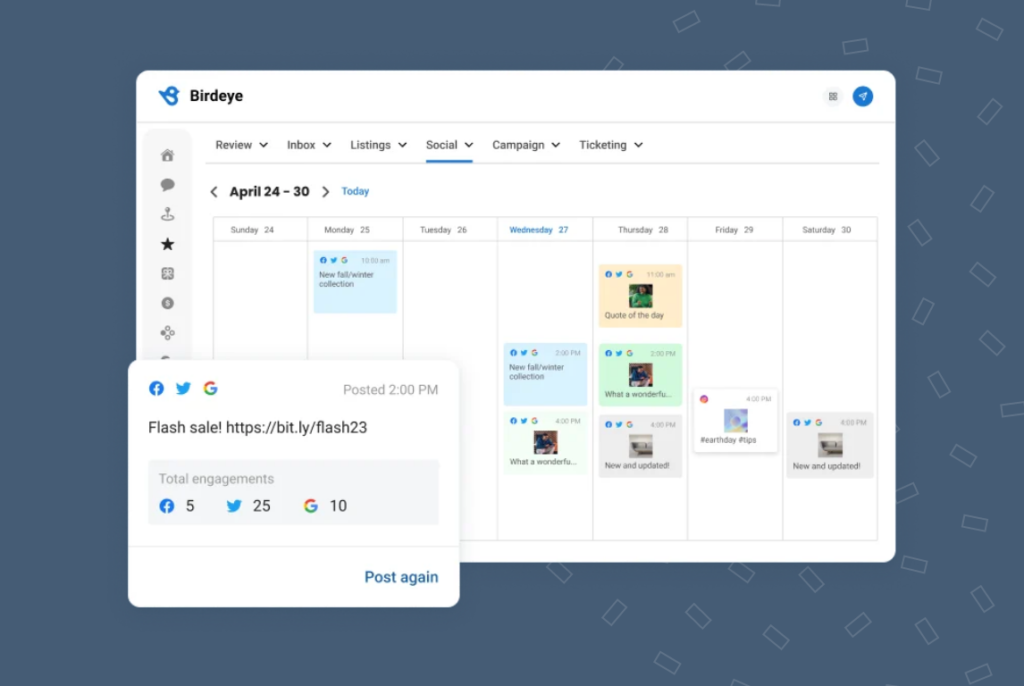
Take the sales conversation offline to move ahead
Social selling is a powerful tool for sales professionals to build relationships with prospective customers. But as with all relationships, it’s the human connection that counts. There are important ways you can humanize your digital interactions.
- If users can’t connect with you either on the phone or in person, your credibility will suffer.
- Be accessible to customers beyond DMs, encourage them to set up a meeting with you outside of social media.
Social selling examples
GoPro
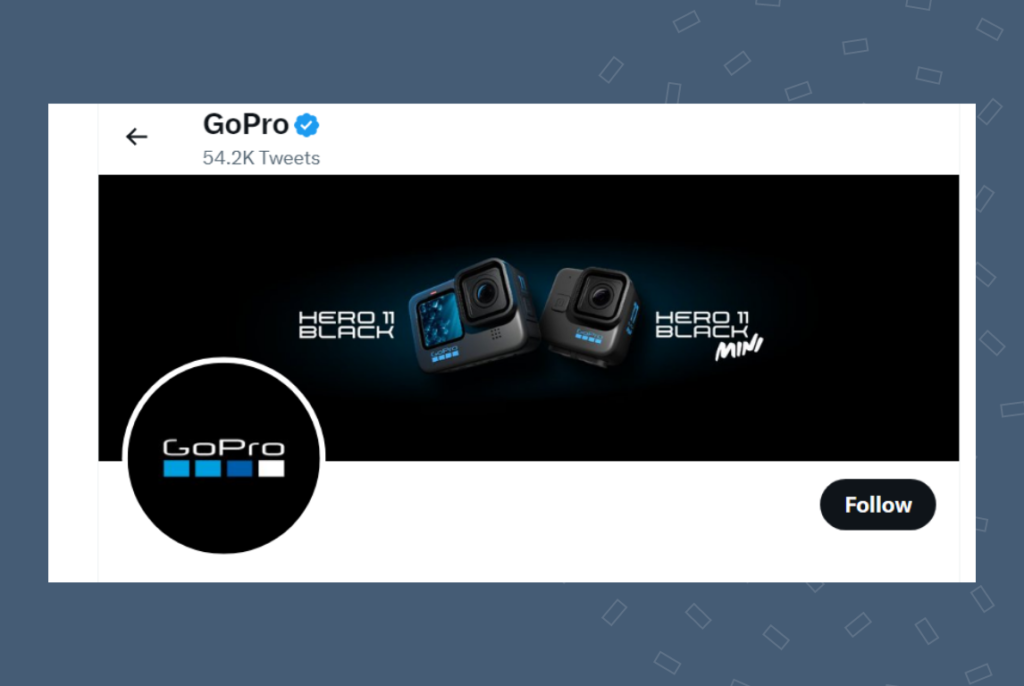
GoPro has 20 million followers on Instagram, 11 million on Facebook, and two million on Twitter. They’ve used their social media presence to create a sense of community among their followers.
The brand constantly features user-generated content in its posts. They also invite their followers to share their own content with branded hashtags. Finally, GoPro uses non-branded hashtags to further its reach to audiences with interests that align with its target market.
- Use contests and giveaways to encourage followers to post valuable content about them using your products.
- Find and use trending hashtags that align with your target audience’s interests.
Chipotle

Chipotle was the first restaurant chain to amass 1 million followers on TikTok. With a mix of humorous memes, clever giveaways, and influencer partners, TikTok’s social media presence gives followers a fun space to engage with the company.
In 2020, Chipotle responded to the pandemic with virtual lunch parties for its customers. From branded TikTok challenges to its #ChipotleSponsorUs contest, in which families vie for free burritos for a year, Chipotle keeps fans coming back.
- Incorporate silly and fun contests in your social media marketing strategy.
- Sponsor online events that will bring your target audience together.
Lego

Lego has mastered social selling with its Lego Ideas campaign. With this user-generated campaign, fans submit their own designs they think would make great new Lego sets. Before Lego considers its idea, the user-generated design must gain support from 10,000 other social media channel users. Each would-be designer is responsible for promoting their ideas, turning each hopeful participant into an enthusiastic marketer for the Lego brand.
- Create a contest for user-generated content that promotes your brand.
- Photo contests are a fun, accessible way to encourage your followers to promote your company.
Frequently asked questions about social selling
Social selling aims to build relationships with your target audience long before they are ready to buy. Social sellers will prioritize authentic engagement over sales tactics.
Don’t ask for the sale before you’ve established trust. One of the main advantages of social selling is that it allows you to invest time in building relationships before the sale.
Multi-level marketing (MLM), or network marketing, promotes products using a rewards system in which social sellers recruit new sellers. The difference is that social selling focuses on creating organic relationships.
The four pillars of social selling are to increase trust, boost brand recognition, develop relationships and widen influence.
Yes, because billions interact every day on social media platforms. Social selling builds relationships with potential customers, including B2B buyers. Social selling increases your reach and provides a way to nurture relationships.
Grow on social media with Birdeye Social
Social and digital selling makes the most of the internet’s potential to connect with people. Social media is unique because you can use it to engage with your audience and connect with decision-makers. If you’re only focusing on social media marketing to get your ads in front of customers, you’re missing out on the impact genuine relationships can have on your sales growth.
The key to building a social media presence that results in building those relationships is to stay consistent, understand what your audience likes, and find opportunities to engage as much as possible.
With Birdeye Social, you can manage all your social media channels from a single dashboard, right from posting, engaging to comments, replying to messages, and monitoring conversations online.
Check out the demo today.

This blog post is part of our Social Media Management Guide
Originally published









